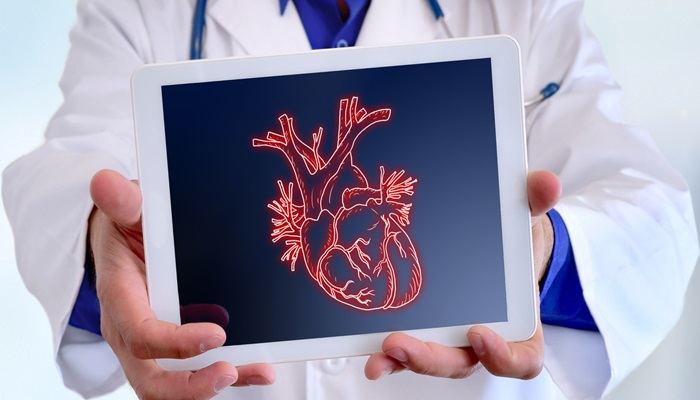Coronary artery disease (CAD) is a leading cause of morbidity and mortality worldwide. It is characterized by the narrowing or blockage of coronary arteries due to atherosclerosis, which can lead to insufficient blood flow to the heart muscle. While CAD itself is a significant health concern, it can also give rise to several secondary diseases that compound the patient’s health challenges. This article explores five notable secondary diseases associated with coronary artery disease, delving into their pathophysiology, clinical manifestations, and management strategies.
5 Secondary Diseases of Coronary Artery Disease
1. Myocardial Infarction
Myocardial infarction (MI), commonly known as a heart attack, is one of the most severe secondary diseases of CAD. It occurs when a coronary artery becomes completely blocked, usually by a blood clot, leading to the cessation of blood flow to a part of the heart muscle.
This deprivation of oxygen-rich blood causes the affected heart muscle tissue to die.
see also: What Are The Secondary Prevention of Ischemic Heart Disease?
Pathophysiology
MI typically results from the rupture of an atherosclerotic plaque in a coronary artery. The exposed plaque contents trigger the formation of a thrombus (blood clot), which can occlude the artery. Prolonged ischemia leads to myocardial necrosis.
Clinical Manifestations
Patients experiencing an MI often present with severe chest pain, which may radiate to the jaw, neck, back, or arms. Other symptoms include shortness of breath, sweating, nausea, and lightheadedness. In some cases, especially in women, the elderly, and diabetics, symptoms may be atypical, such as fatigue, indigestion, or a silent MI with minimal symptoms.
Management
Immediate treatment involves the administration of medications such as aspirin, nitroglycerin, and thrombolytics to dissolve clots. Reperfusion strategies, including percutaneous coronary intervention (PCI) and coronary artery bypass grafting (CABG), are crucial. Long-term management includes lifestyle modifications, medications (beta-blockers, ACE inhibitors, statins), and cardiac rehabilitation.
2. Heart Failure
Heart failure (HF) is a chronic condition that can develop as a consequence of CAD. It occurs when the heart is unable to pump blood effectively, leading to inadequate perfusion of tissues and organs.
Pathophysiology
Chronic ischemia and recurrent myocardial infarctions can weaken the heart muscle, reducing its contractile function. Over time, the heart undergoes structural changes, such as ventricular remodeling, which further impairs its ability to pump blood.
Clinical Manifestations
Symptoms of heart failure include dyspnea (shortness of breath), especially during exertion or when lying down, fatigue, edema (swelling) in the legs and ankles, and rapid or irregular heartbeat.
Patients may also experience persistent coughing or wheezing, increased need to urinate at night, and reduced ability to exercise.
Management
Treatment focuses on managing symptoms, slowing disease progression, and improving quality of life. Medications such as diuretics, ACE inhibitors, beta-blockers, and aldosterone antagonists are commonly used. Lifestyle changes, including dietary modifications, physical activity, and fluid restriction, are also important. In severe cases, devices like implantable cardioverter-defibrillators (ICDs) or ventricular assist devices (VADs), and heart transplantation may be considered.
3. Arrhythmias
Arrhythmias, or irregular heartbeats, are another significant secondary disease of CAD. They can range from benign to life-threatening and are caused by disruptions in the heart’s electrical activity.
Pathophysiology
Ischemia and infarction can damage the heart’s electrical conduction system, leading to arrhythmias. Scar tissue from previous heart attacks can also interfere with normal electrical impulses.
Clinical Manifestations
Arrhythmias can present as palpitations, dizziness, syncope (fainting), shortness of breath, or chest discomfort. Some arrhythmias, like atrial fibrillation, increase the risk of stroke, while others, like ventricular fibrillation, can lead to sudden cardiac death.
Management
Treatment depends on the type and severity of the arrhythmia.
Medications such as antiarrhythmics, beta-blockers, and anticoagulants are often prescribed. Electrical cardioversion, catheter ablation, and the implantation of pacemakers or ICDs may be necessary for certain arrhythmias. Lifestyle changes and avoiding triggers (e.g., excessive caffeine or alcohol) can also help manage arrhythmias.
4. Chronic Kidney Disease
Chronic kidney disease (CKD) is increasingly recognized as a secondary disease linked to CAD. The two conditions share common risk factors, and the presence of one often exacerbates the other.
Pathophysiology
Reduced cardiac output in CAD leads to decreased renal perfusion, promoting kidney damage. Additionally, hypertension and diabetes, common comorbidities with CAD, further contribute to CKD development.
Clinical Manifestations
CKD is often asymptomatic in its early stages. As the disease progresses, symptoms such as fatigue, edema, hypertension, and electrolyte imbalances (e.g., hyperkalemia) become apparent. Advanced CKD can lead to anemia, bone disease, and cardiovascular complications.
Management
Managing CKD involves controlling blood pressure, blood sugar, and cholesterol levels. Medications like ACE inhibitors or angiotensin II receptor blockers (ARBs) are used to protect kidney function. Dietary changes, including reducing salt, protein, and potassium intake, are also important. In advanced stages, dialysis or kidney transplantation may be required.
5. Peripheral Artery Disease
Peripheral artery disease (PAD) is a common secondary disease of CAD, characterized by the narrowing of arteries in the limbs, most commonly the legs.
Pathophysiology
Atherosclerosis is the underlying cause of PAD, similar to CAD.
Reduced blood flow to the extremities leads to ischemia and can result in tissue damage or ulcers.
Management
Treatment focuses on improving symptoms and preventing disease progression. Lifestyle modifications, including smoking cessation, regular exercise, and a healthy diet, are essential. Medications such as antiplatelet agents, statins, and cilostazol can help manage PAD. In severe cases, revascularization procedures like angioplasty or bypass surgery may be necessary.
Conclusion
Coronary artery disease significantly impacts patients’ health by not only causing primary cardiac events but also leading to various secondary diseases. Understanding the pathophysiology, clinical manifestations, and management strategies for secondary diseases such as myocardial infarction, heart failure, arrhythmias, chronic kidney disease, and peripheral artery disease is crucial for comprehensive patient care. Early detection and proactive management of these conditions can improve outcomes and quality of life for individuals with CAD.

